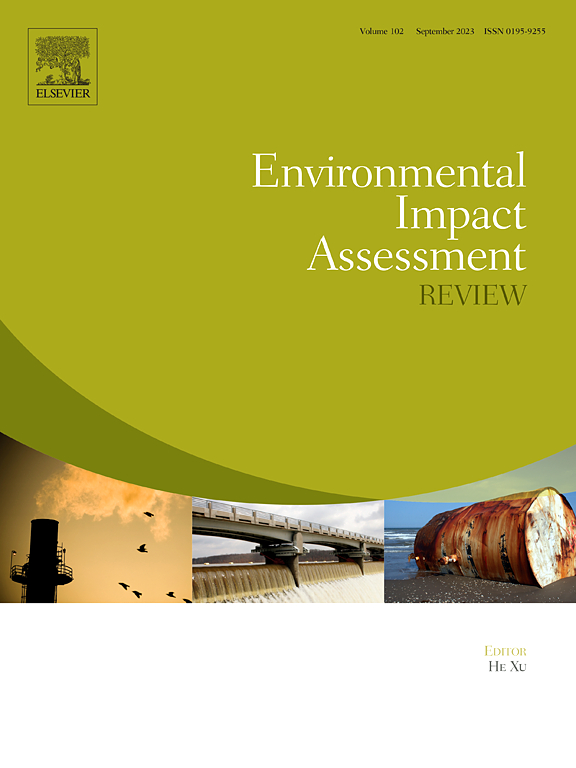Toward a low-carbon economy: Insights from low- carbon complexity index
IF 9.8
1区 社会学
Q1 ENVIRONMENTAL STUDIES
引用次数: 0
Abstract
Low-carbon production capability is crucial for national low-carbon development. However, mainstream metrics used to assess national low-carbon development levels, such as carbon emission intensity, carbon productivity and composite environmental indices, fail to quantify this capability. These metrics offer limited utility in forecasting and directing low-carbon development. Therefore, using a sample of 43 countries from the EXIOBASE database, this study develops the low-carbon complexity index (LCCI) and analyzes its effectiveness in evaluating, predicting and guiding national low-carbon development. The results show that the LCCI value range has narrowed from [0.087, 2.031] in 1997 to [0.068, 1.891] in 2022. The LCCI rankings among the top 10 and bottom 10 countries have remained relatively stable over the past 20 years, revealing a carbon lock-in effect. Furthermore, low-carbon complexity significantly influences carbon emission intensity and its decline rate, demonstrating that the LCCI is an effective tool in depicting and forecasting national carbon emission performance. Countries with higher LCCI exhibit lower carbon emission intensity and tend to achieve greater reductions in carbon emission intensity. Based on the relatedness-complexity diagram, industrial support targets and investment prioritization to promote low-carbon transition can be identified.
迈向低碳经济:低碳复杂性指数的启示
低碳生产能力是国家低碳发展的关键。然而,用于评估国家低碳发展水平的主流指标,如碳排放强度、碳生产率和复合环境指数,未能量化这一能力。这些指标在预测和指导低碳发展方面的效用有限。因此,本文以EXIOBASE数据库中的43个国家为样本,构建了低碳复杂性指数(LCCI),并分析了其在评价、预测和指导国家低碳发展中的有效性。结果表明,LCCI的取值范围从1997年的[0.087,2.031]缩小到2022年的[0.068,1.891]。LCCI前10名和后10名国家的排名在过去20年里保持相对稳定,显示出碳锁定效应。此外,低碳复杂性显著影响碳排放强度及其递减率,表明LCCI是描述和预测国家碳排放绩效的有效工具。LCCI越高的国家碳排放强度越低,碳排放强度的降低幅度也越大。基于关联-复杂性图,可以确定促进低碳转型的产业支持目标和投资优先级。
本文章由计算机程序翻译,如有差异,请以英文原文为准。
求助全文
约1分钟内获得全文
求助全文
来源期刊

Environmental Impact Assessment Review
ENVIRONMENTAL STUDIES-
CiteScore
12.60
自引率
10.10%
发文量
200
审稿时长
33 days
期刊介绍:
Environmental Impact Assessment Review is an interdisciplinary journal that serves a global audience of practitioners, policymakers, and academics involved in assessing the environmental impact of policies, projects, processes, and products. The journal focuses on innovative theory and practice in environmental impact assessment (EIA). Papers are expected to present innovative ideas, be topical, and coherent. The journal emphasizes concepts, methods, techniques, approaches, and systems related to EIA theory and practice.
 求助内容:
求助内容: 应助结果提醒方式:
应助结果提醒方式:


